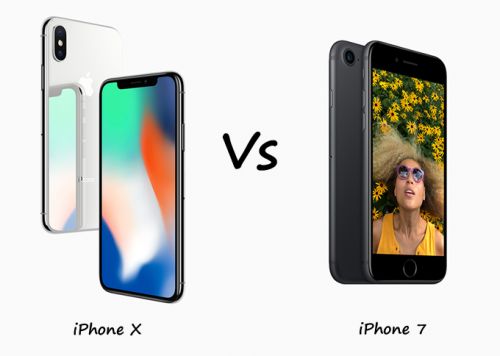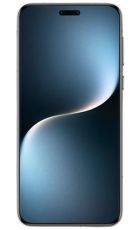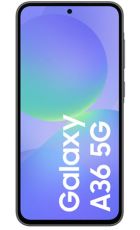The iPhone X was perhaps the most highly anticipated iPhone ever, and on paper it doesn’t look like it’s going to disappoint.
It’s almost completely different to the iPhone 7, thanks to a bigger screen, a new camera, additional features and more, but there are still some similarities.
So we’ve compared the two phones across all the points that matter, to get to the bottom of what’s new, what’s old, and exactly how the iPhone X and iPhone 7 compare.
Design
iPhone X (143.6 x 70.9 x 7.7mm) vs iPhone 7 (138.3 x 67.1 x 7.1mm)
The first thing you might notice about the iPhone X is that it has almost no bezel on the front, instead sporting a screen right across that side, with just a tiny sliver at the top to house cameras and sensors.
This also means that Apple’s iconic home button is gone, and it marks a stark contrast to the iPhone 7, which has a home button and large bezels.
Or you might first notice that the iPhone X is a big phone at 143.6 x 70.9 x 7.7mm. That’s a lot larger than the 138.3 x 67.1 x 7.1mm iPhone 7, though by eliminating the bezel Apple has somewhat kept the size of the iPhone X under control.
Or perhaps you’ll first notice the new material the iPhone X is made out of, with a glass back and metal frame in place of the all-metal finish on the iPhone 7.
Ultimately these are both premium looking phones, but the iPhone X is both bigger and a little more modern in its design. And behind the scenes it’s got the same protections as the iPhone 7, as both are IP67 certified (allowing the phone to be submerged up to 1 metre for 30 minutes).
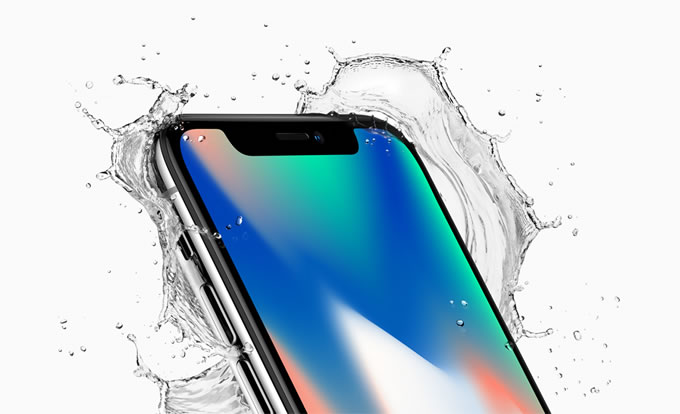
Display
iPhone X (5.8-inch 1125 x 2436) vs iPhone 7 (4.7-inch 750 x 1334)
That big screen on the iPhone X is 5.8 inches, while the iPhone 7’s display is tiny in comparison at 4.7 inches.
The iPhone X’s screen is also sharper at 1125 x 2436 and 458 pixels per inch, than the iPhone 7’s 750 x 1334 display, which comes in at 326 pixels per inch.
And the technology has changed, with the iPhone X using AMOLED, for better contrast and more vibrant colours than the LCD display of the iPhone 7. Plus it supports HDR and has a True Tone display, allowing it to automatically adjust the white balance.
Still, while the iPhone X’s display is a clear upgrade in a lot of ways, if you prefer compact phones you’re likely to still prefer the iPhone 7, which has a high-quality screen in its own right.
Power
iPhone X (six-core A11 Bionic) vs iPhone 7 (quad-core A10 Fusion 2GB RAM)
It’s no surprise that the iPhone X has had a power boost, with a new six-core Apple A11 Bionic chipset at its heart.
The iPhone 7 meanwhile has a less powerful – but still speedy – quad-core A10 Fusion chipset and 2GB of RAM (the X likely has 3GB, but Apple hasn't confirmed). Despite its lower end specs, the iPhone 7 can handle most tasks effortlessly, but the additional power in the iPhone X should help future-proof it. According to Apple the A11 Bionic's fastest cores are 25% faster than the A10 Fusion, while its GPU is 30% faster.
Camera
iPhone X (dual 12MP rear 7MP front-facing) vs iPhone 7 (12MP rear 7MP front-facing)
One of the main upgrades on the iPhone X comes in the form of the camera, as Apple has stuck two 12MP lenses on the back of the phone. That allows for 2x optical zoom, and lets you create bokeh effects with photos, which is to say, blur the background for a more striking foreground.
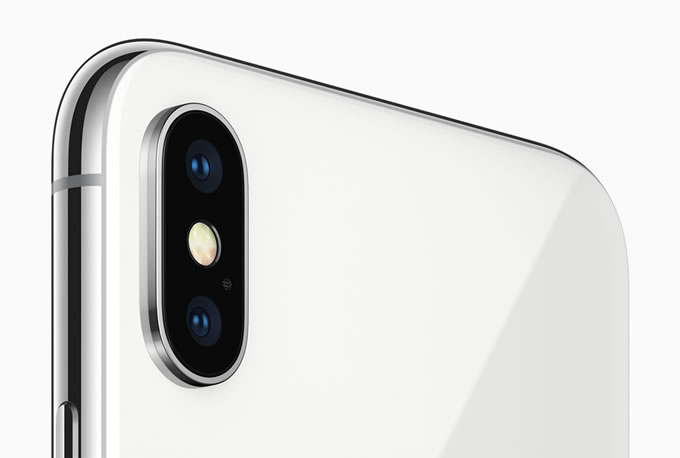
The camera also has optical image stabilisation on both lenses to keep your shots steady, and augmented reality features that are way more advanced than we've seen before.
Around the front there’s a 7MP snapper, with a face scanner included, meaning you can unlock your phone with your face, and it's advanced enough to not be tricked by a photo.
The iPhone 7 meanwhile has just one rear camera, but it’s still 12MP and also has optical image stabilisation. It’s not capable of all the iPhone X’s new camera tricks, but it can take great photos. And there’s a 7MP camera on the front, but no face scanner.
Battery life, memory and connectivity
iPhone X (64/256GB 4G) vs iPhone 7 (1960mAh 32/128/256GB 4G)
Apple hasn’t revealed the size of the iPhone X’s battery, but supposedly it will last for around 2 hours longer than the iPhone 7's 1960mAh one.
And you can charge the iPhone X more easily too, as it supports wireless charging, which the iPhone 7 doesn’t.
Memory on the iPhone X comes in at 64 and 256GB, while the iPhone 7 has 32GB, 128GB and 256GB storage options.
Connectivity options are similar, with both phones supporting Wi-Fi, 3G and 4G, but the iPhone X supports Bluetooth 5.0, while the iPhone 7 is on Bluetooth 4.2.
Price and availability
The iPhone 7 is of course available now, and starts at £549. That’s still quite expensive, but the iPhone X costs far more at £999.
Conclusion
The iPhone X looks to be an upgrade on the iPhone 7 in almost all ways. The screen is bigger, the design has changed and arguably improved, there’s more power, a likely better camera and additional features.
Of course, the iPhone X also costs more, but if you’re looking to upgrade your phone this year and have the money then the iPhone X should be a strong option.
If it lives up to its promise it will be the best and most exciting phone Apple’s ever made, and quite possibly the best phone available from any company.


